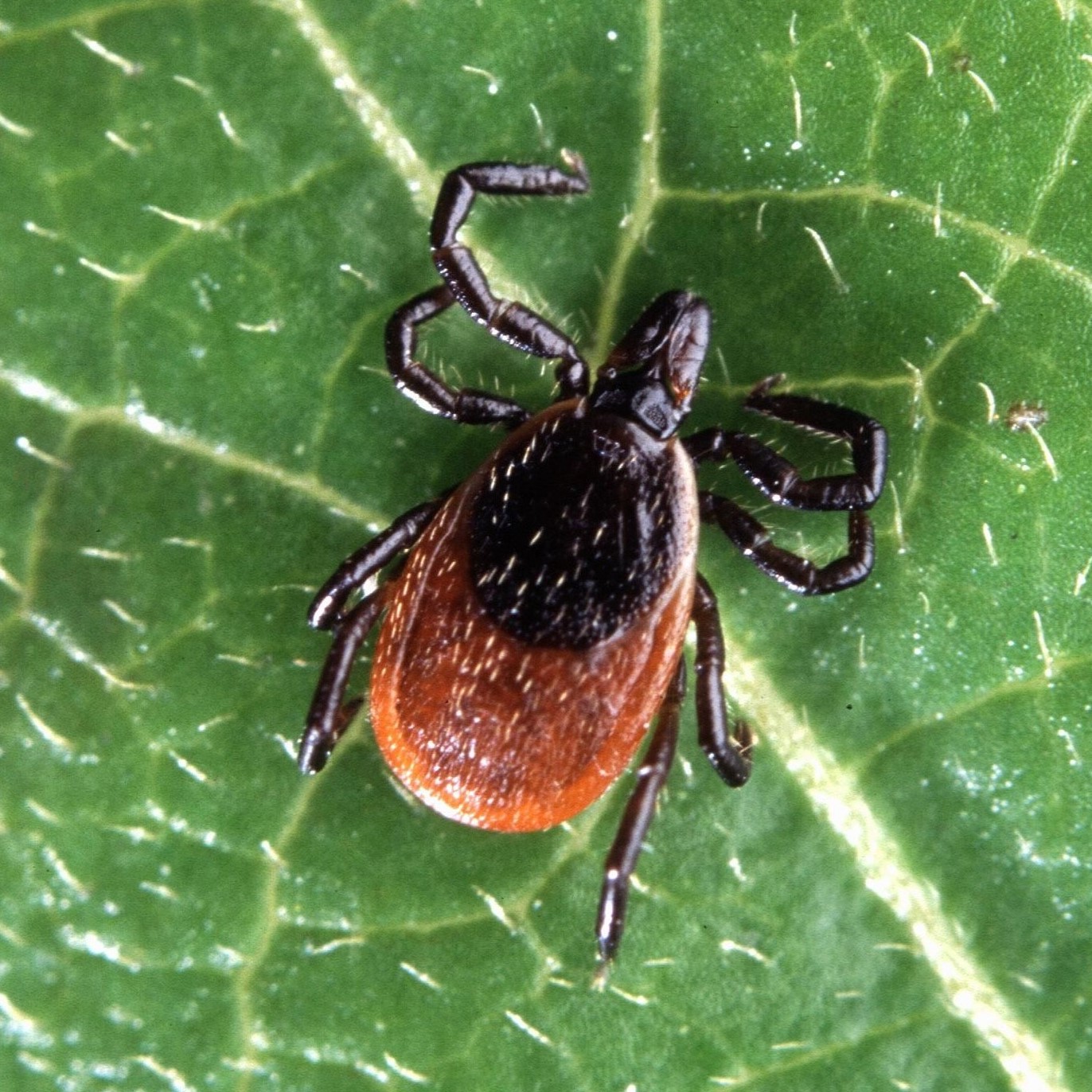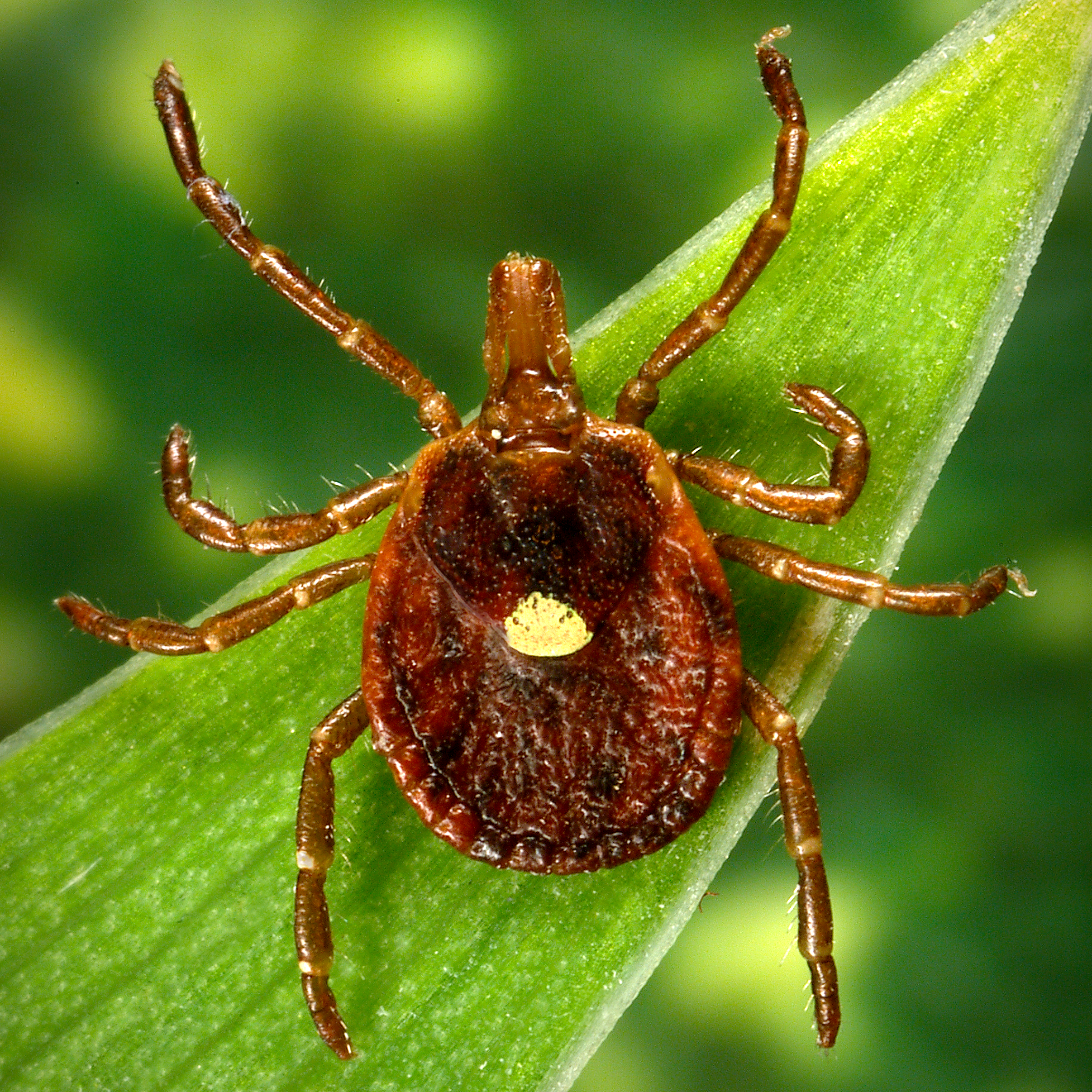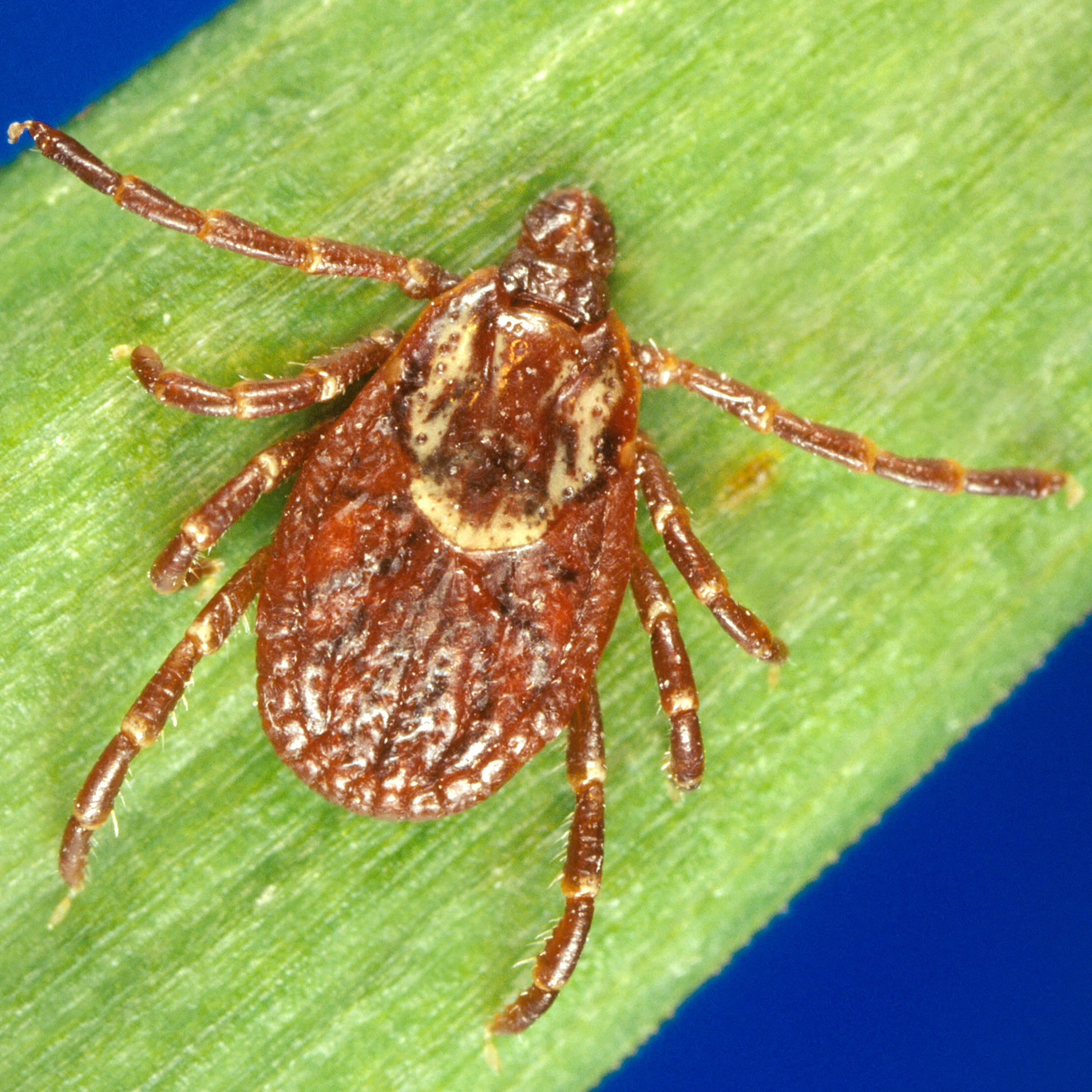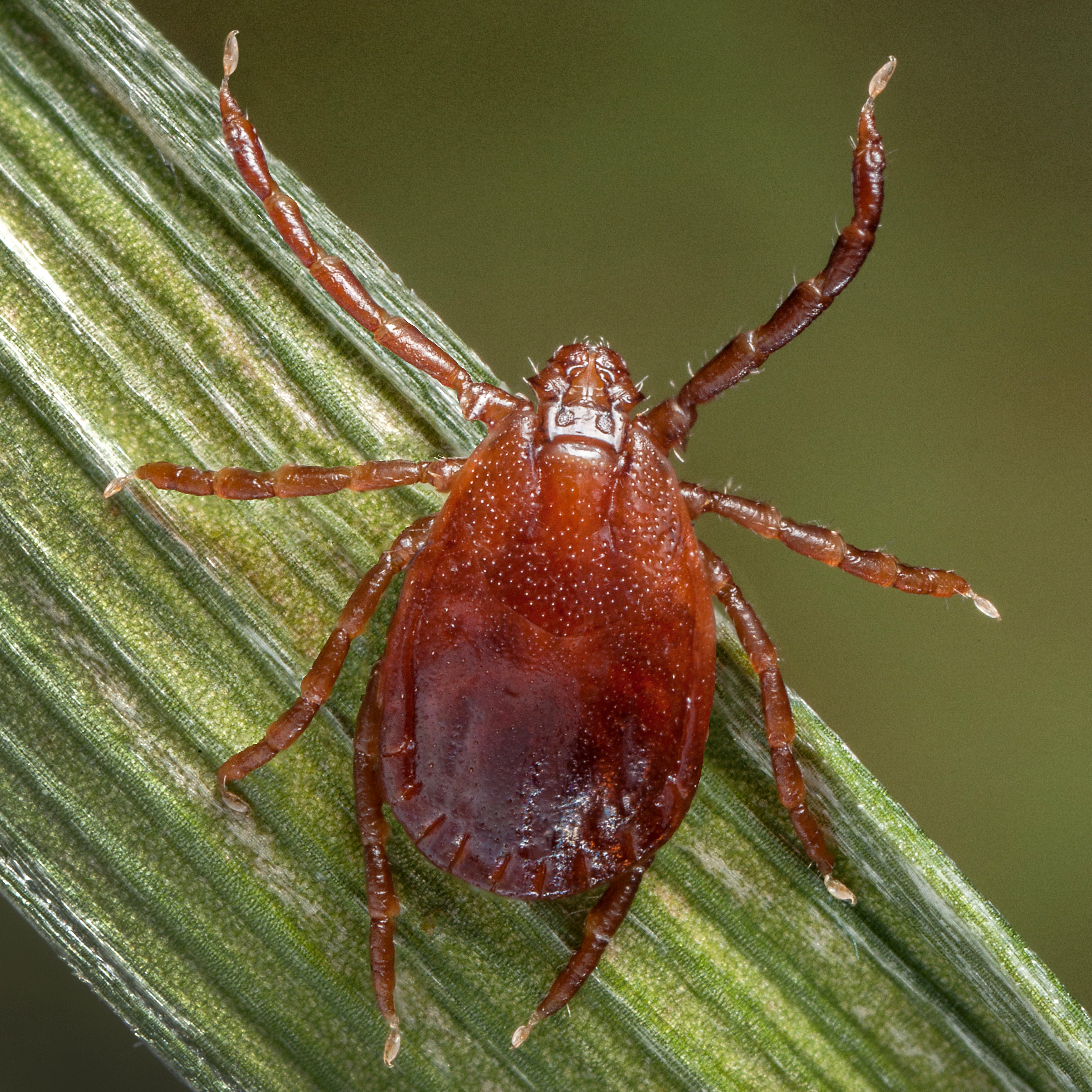
[ Ver esta página en español ]
Ticks
Ticks are most active in spring, summer and fall. They can be found in cooler areas where trees, brush, leaf litter and tall grasses provide cover and shade from the sun. Ticks avoid heat and direct sunlight. Ticks feed on blood and will wait for a person or animal to walk by to grab onto. They will then crawl onto the person or animal and search for a suitable spot on the body to attach and feed.
Most NYC residents diagnosed with a tick-borne disease are infected when visiting grassy, wooded areas in upstate New York, Long Island, and surrounding states. However, several types of ticks have been found in New York City. Some of them have tested positive for the germs that cause Lyme disease and other tick-borne diseases.
View an interactive map of U.S. counties that have reported infected ticks.
Types of ticks found in NYC




(a.) Blacklegged ticks (deer ticks) live in Staten Island and the north Bronx. They are about the size of a sesame seed and can spread Lyme disease, anaplasmosis and babesiosis.
(b.) Lone star ticks live in Staten Island and can sometimes be found in the north Bronx. They are about the size of a pea and can spread ehrlichiosis. They have also been linked with alpha-gal syndrome.
(c.) American dog ticks live in all five boroughs of NYC. They are a little larger than the size of a pea and can spread Rocky Mountain spotted fever.
(d.) Asian longhorned ticks live in Staten Island and the Bronx. They have not been found to spread diseases in the U.S.
Prevent Tick Bites
Use these tips to prevent tick bites:
Clothing
- Wear light-colored clothing to see ticks easier.
- Tuck pants into socks and shirts into pants to prevent ticks from attaching to your skin.
- Tie hair up or wear a hat.
- Wear gloves when gardening.
- Use hot water when washing clothing to kill ticks. If hot water cannot be used, tumble dry on low heat for 70 minutes or high heat for 40 minutes.
- Place dry clothing in a dryer on high heat for 10 minutes to kill ticks. Wet or damp clothing might need more time in the dryer.
Repellent
- Use insect repellent that contains DEET, picaridin or IR3535.
- Permethrin products can be used on clothing or shoes (but not the skin) to kill ticks.
- Wash off any insect repellent when you come indoors.
- Watch: Tick Repellent Information
Other Languages: Español
Pets
- Ask your veterinarian which flea and tick repellents are best to use on your pet.
- Dogs can also get sick from ticks. If you think your dog may have been bitten by a tick and you see changes in your dog’s behavior or appetite, speak with your veterinarian.
In Your Yard
- Create a barrier to define a tick-safe zone (PDF) around your yard.
- Keep grass short and don’t let piles of brush or leaves build up.
- Trim shrubs and tree branches around your yard to let in more sunlight.
- Keep playground equipment and outdoor furniture in a sunny location, away from yard edges and trees.
- Don’t leave out food that attracts deer and other wildlife.
- Consider hiring a pest management professional. To learn more visit dec.ny.gov/nyspad
Check for Ticks
Check for ticks on yourself, children and pets when returning indoors from tick-infested areas. Your chance of getting sick from a bite is lower if you remove the tick quickly.
Look for ticks in:
- All joint areas
- The belly button
- Behind ears
- Behind knees
- Between the legs
- Around the waist
- In the hairline
- In other skin folds
You should shower within two hours of coming indoors to wash off ticks and to make it easier to find any crawling ticks.
Remove a Tick
If a tick is crawling on you, remove the tick and dispose of it. For disposal, you can flush it down the toilet or put it in alcohol, a sealed bag/container, or wrap it tightly in tape before throwing it in the trash.
If the tick is attached (or stuck) on your skin, watch this video on how to remove ticks and follow these steps:
- Using pointed-tip tweezers, grab the tick at the point where it is closest to the skin (this is the head of the tick). Do not grab the body of the tick, as that can cause the mouth parts to break off and remain in the skin, leading to an infection.
- Gently pull up on the tick with slow, even pressure to ease out the mouth parts.
- Do not handle the tick with bare hands.
- Do not squash or squeeze the tick.
- After removing the tick, wash your hands and whatever parts of your skin the tick touched with soap and water or rubbing alcohol.
- Do not use petroleum jelly (Vaseline®), nail polish remover or heat to remove the tick. These methods can increase the risk of infection.
- Contact your health care provider immediately if you develop fever, aches and pains or a rash.
Testing Ticks for Diseases
Testing ticks for diseases is not recommended because:
- If you have been infected, you may develop symptoms before results are available.
- A tick that tests positive for a tick-borne disease may not have been attached long enough to infect you.
- Even if the tick tests negative, it is possible you were unknowingly bitten by a different tick that might have infected you.
If you think you were bitten by a tick or are experiencing symptoms, contact your doctor.
Additional Resources
- CDC: Ticks
- University of Rhode Island: Tick Encounter Resource Center
- Northeast Regional Center for Excellence in Vector-Borne Diseases
- City Health Information: Preventing, Diagnosing, and Managing Tickborne Diseases (PDF, July 2022)
Print copies of the below materials may be requested by calling 311.
- New York City Tick ID and Removal Wallet Card (PDF)
Other Languages: Español| Русский | Italiano - All About Ticks: A Workbook for Kids and Their Parents (PDF) Other Languages: Español
- Tick-borne Disease Diagnostic Reference: Poster for Providers (PDF)
- Tick-Borne Diseases in NYC, A Physician's Reference Manual (PDF)
- Ticks taking over? Take back your yard (PDF)
Other Languages: Español




